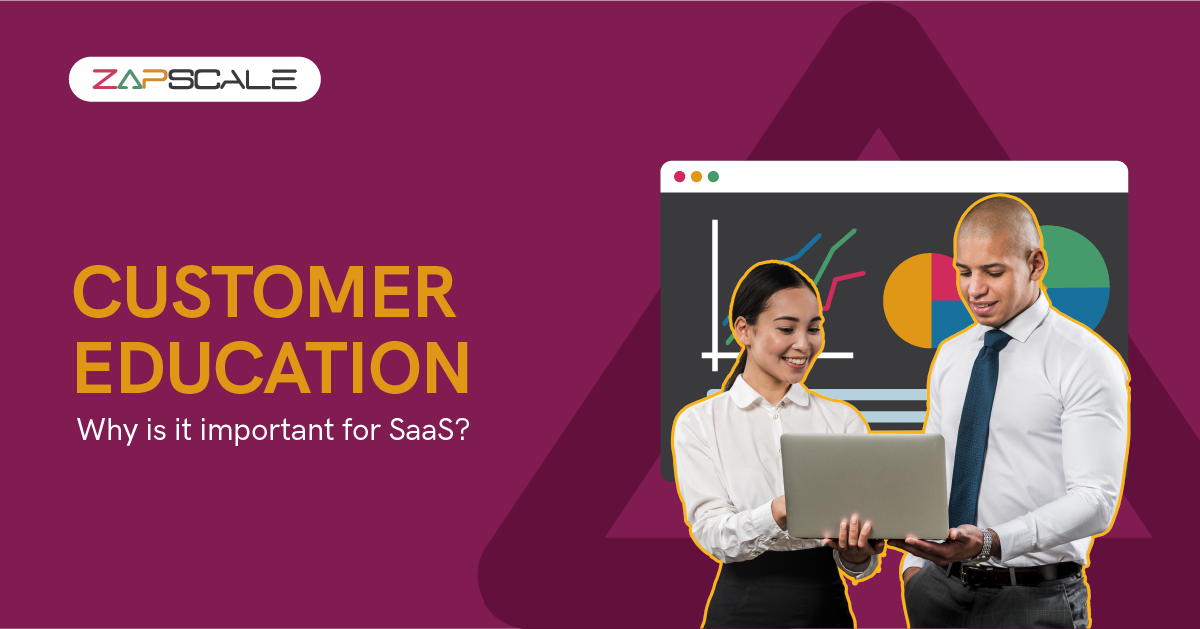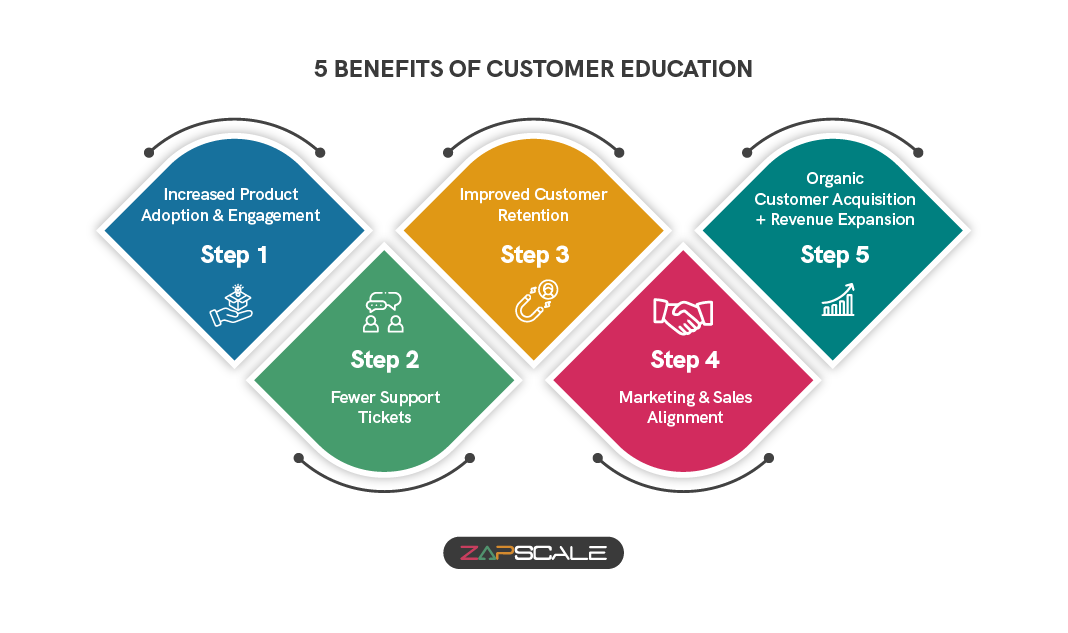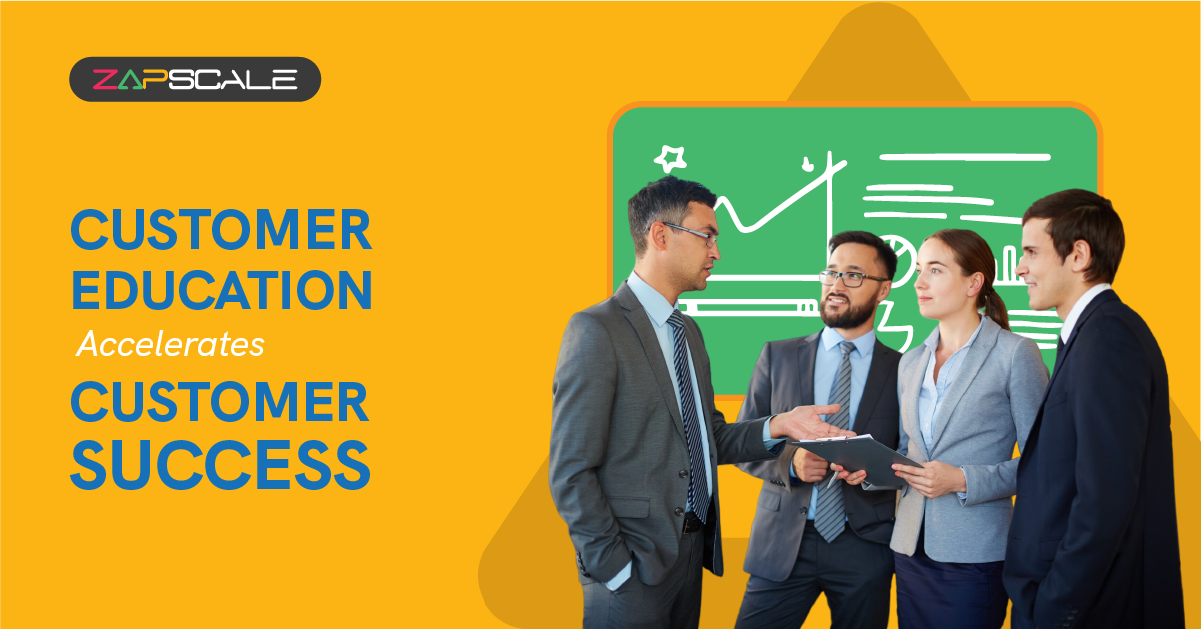CATEGORY > Customer Education
Your Go-To Guide to Customer Education for SaaS

Forget expensive marketing campaigns and viral social media stunts. In this age of digital overload, the real battleground for customer loyalty lies within your product itself. Gone are the days when features and price reigned supreme. Today's savvy consumers are on an insatiable quest for the complete package – innovative products backed by unparalleled customer experiences.
They crave more than features and pricing – they crave value and experience.
What is Customer Education?
Think of products as seeds in a garden. They have the potential to bloom into beautiful flowers, but without proper care and nurturing, they may wither away.
Customer education is like having a green thumb guiding you to cultivate success from seed to blossom.
Customer education, or customer training or enablement, refers to providing comprehensive learning resources and experiences to help customers gain the knowledge and skills required to maximize the value they derive from your products or services. It involves sharing industry expertise, best practices, thought leadership content, and advanced tips that position the brand as a trusted subject matter authority.
Meaningful customer education requires an investment of time and resources. But the payoffs in terms of higher ROI, customer retention, upsells, and brand equity are well worth it.
So, next time you see a helpful guide or a cool online course offered by a company, know that it's not just random – it's customer education in action!
What are the Benefits of Customer Education?
When done right, customer education fosters deeper connections with your customers since it shows you care about their success, not just making a sale. Over time, this builds confidence, loyalty, and advocacy as customers see you as a knowledgeable partner invested in their growth.

1. Increased Product Adoption & Engagement
Educated customers understand the "why" and "how" behind your product.
This translates to higher product adoption rates, deeper engagement, and ultimately, greater value derived from your offering.
This results in:
- Fostering a sense of purpose and control
- Unlocking product stickiness and a higher ROI for your customers
- Building confident users and potential user communities
2. Fewer Support Tickets
Effective customer onboarding and self-service resources empower customers to get started quickly and independently.
This frees up your support team for more complex issues and reduces overall support costs.
This will help you in:
- Onboarding on autopilot
- Improving overall customer satisfaction
3. Improved Customer Retention
Satisfied customers who can leverage your product's full potential are more likely to be satisfied and stay loyal. By demonstrating the full value proposition and helping users achieve their desired outcomes, customer education programs actively:
- Reduce churn through value realization
- Build customer advocacy
- Reduce the risk of customers seeking alternatives

4. Marketing & Sales Alignment
This fosters a more unified approach to customer engagement and revenue generation.
You can:
- Break down silos and deliver a more consistent and compelling customer experience
- Derive valuable insights into user behavior and learning patterns
- Promote a company-wide culture of customer-centricity
5. Organic Customer Acquisition + Revenue Expansion
High-quality, informative content within your customer education program can attract potential customers organically.
You can:
- Position your company as an industry thought leader
- Leverage SEO benefits with well-structured and informative content
- Build trust before the sale through positive brand perception by offering valuable educational resources
Remember, the key is tailoring the educational experience to your audience's needs, goals, and learning preferences. Some may want self-paced courses, others may prefer in-person workshops. Versatility and continuous learning opportunities are vital.
Types of Customer Education
As we mentioned earlier, customer education has to be a carefully curated journey that meets customers where they are, empowering them through a series of learning experiences tailored to their unique needs and preferences.
To truly empower users and maximize impact, your program should embrace a variety of content formats and delivery styles.

Here's a comprehensive look at the most effective types of customer education:
1. Foundational Knowledge
User Manuals & Knowledge Base Articles
These serve as the core of your program, providing step-by-step instructions and clear explanations of core product features. Accessibility is key here – offer them in multiple formats (written, video) and ensure they're easy to search and navigate.
Interactive Tutorials & Product Tours
Take users on a guided exploration of your product's functionalities. Interactive elements like quizzes and simulations can enhance learning and retention.
2. Deep Dives & Advanced Training
In-Depth E-Books & White Papers
Delve deeper into specific product areas or complex topics. E-books can be segmented for different user levels, while white papers can establish your company as a thought leader in your industry.
Live Webinars & On-Demand Courses
Interactive sessions with industry experts allow for real-time knowledge transfer and Q&A sessions. Offer recordings as on-demand courses for flexible learning.
3. Community & Collaboration
Online Forums & User Communities
Foster a space for peer-to-peer learning and knowledge sharing. Dedicated online forums can help users learn from each other's experiences and troubleshoot issues collaboratively.
Customer Success Stories & Case Studies
Display real-world examples of how customers have achieved success using your product. This inspires others and demonstrates the product's value proposition in a relatable way.
4. Microlearning & On-The-Go Support
Short Videos & GIFs
Short, visually engaging content is ideal for delivering quick tips and demonstrating specific product features. They can be easily shared on social media platforms and accessed on mobile devices.
Contextual Help & Tooltips
Integrate in-app help features that provide contextually relevant information and guidance as users navigate the product interface.
5. Gamification & Incentives
Points, Badges, & Leaderboards
Gamification elements can add layers of fun and healthy competition to the learning experience. Reward users for completing educational activities and encourage continued engagement.
Personalized Learning Paths & Challenges
Tailor learning journeys based on user needs and goals. Offer personalized challenges and recommended resources to promote continuous improvement and proficiency.
By strategically positioning a variety of these content formats, you create a well-rounded customer education program that caters to diverse learning styles and maximizes the impact on user knowledge, engagement, and overall customer success.
How To Launch an Impactful Customer Education Program?
From defining clear goals to creating tailored content pathways, building a centralized knowledge hub, and enabling internal teams - there are many pieces to the puzzle.
Customer education program requires a strategic and methodical approach.
Whether you're just starting to explore customer education or looking to level up an existing program, this step-by-step process will help you formulate a comprehensive customer education initiative that drives real business impact.
STEP 1: Define Goals and Success Metrics
Before diving in, clearly define what you aim to achieve through customer education - is it increased product adoption, reduced support costs, or higher customer retention?
Align goals with broader business objectives and establish measurable KPIs to track progress.
STEP 2: Conduct a Needs Analysis
Gather insights into your customers' knowledge gaps, pain points, goals, and learning preferences through surveys, interviews, support ticket analysis, etc. This data will inform the content and delivery methods.
STEP 3: Map the Customer Journey
Identify key touchpoints where customer education can drive value across the entire customer lifecycle - from onboarding to adoption, expansion to advocacy.
Map out learning paths tailored to different user personas.
STEP 4: Create a Content Strategy
Based on goals and customer needs, develop a comprehensive content plan covering various formats - videos, documentation, interactive courses, live sessions, and more.
Determine content governance, creation workflows, and tools.
STEP 5: Build a Centralized Learning Hub
Invest in a dedicated customer education platform or learning management system (LMS) to host and deliver content in a seamless, self-service manner. This serves as the central hub for all resources.
STEP 6: Integrate with Existing Systems
Ensure seamless integration between the learning hub and other critical systems like CRM, marketing automation, and support desk to enable data sharing, automated workflows, and a unified customer view.
STEP 7: Promote and Drive Adoption
Market the education program through in-app prompts, email campaigns, sales outreach, etc. Incentivize participation through gamification, certifications, and making education a prerequisite for advanced support.
STEP 8: Enable Internal Teams
Train and enable customer-facing teams like sales, support, and success on the education resources, so they can effectively guide customers and reinforce learning.
STEP 9: Capture Feedback and Optimize
Continuously gather customer feedback through surveys, usage analytics, NPS, etc. Use these insights to iteratively improve content quality, formats, and overall program effectiveness.
STEP 10: Measure Results and Demonstrate ROI
Consistently measure success metrics tied to your goals. Calculate ROI through metrics like reduced support costs, increased customer lifetime value, and revenue from upsells/cross-sells. Communicate wins to leadership.
Conclusion
So, consider yourself officially briefed!
You're no longer just offering a product, you're building a community of empowered users.
Sure, building a world-class education program takes work. But this guide has given you the game plan.
Most importantly, remain curious about your customers' needs and experiences.
This, in turn, translates to a powerful feedback loop: reduced churn, lower support costs, and more resources to invest in even richer educational experiences.
ABOUT THE AUTHOR
Popular from Customer Education
Quality Content,
Straight To Your Inbox!
Subscribe for the latest blogs, podcasts, webinars, and events!

Write a Blog
If you have experience in CS and
a flair for writing, we’d love to
feature you.
Write to us on
hello@zapscale.com




